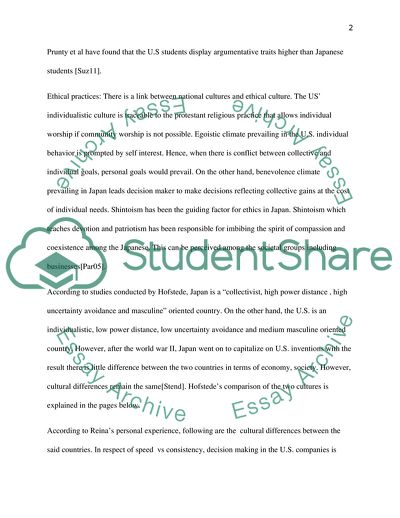Cite this document
(Culture Comparison between USA and Japan Coursework Example | Topics and Well Written Essays - 2750 words, n.d.)
Culture Comparison between USA and Japan Coursework Example | Topics and Well Written Essays - 2750 words. https://studentshare.org/culture/1795361-culture-comparison-between-usa-and-japan
Culture Comparison between USA and Japan Coursework Example | Topics and Well Written Essays - 2750 words. https://studentshare.org/culture/1795361-culture-comparison-between-usa-and-japan
(Culture Comparison Between USA and Japan Coursework Example | Topics and Well Written Essays - 2750 Words)
Culture Comparison Between USA and Japan Coursework Example | Topics and Well Written Essays - 2750 Words. https://studentshare.org/culture/1795361-culture-comparison-between-usa-and-japan.
Culture Comparison Between USA and Japan Coursework Example | Topics and Well Written Essays - 2750 Words. https://studentshare.org/culture/1795361-culture-comparison-between-usa-and-japan.
“Culture Comparison Between USA and Japan Coursework Example | Topics and Well Written Essays - 2750 Words”. https://studentshare.org/culture/1795361-culture-comparison-between-usa-and-japan.


